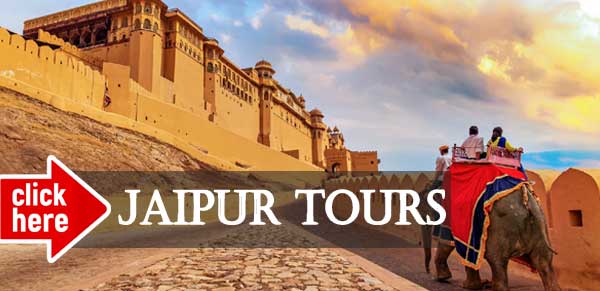

Amer Fort is a fort located in Amer, Rajasthan, India. Amer is a town with an area of 4 square kilometres (1.5 sq mi) located 11 kilometres (6.8 mi) from Jaipur, the capital of Rajasthan. Located high on a hill, it is the principal tourist attraction in Jaipur. The town of Amer was originally built by Meenas, and later it was ruled by Raja Man Singh I (December 21, 1550 – July 6, 1614). Amer Fort is known for its artistic Hindu style elements. With its large ramparts and series of gates and cobbled paths, the fort overlooks Maota Lake, which is the main source of water for the Amer Palace.
Establishment of this fort was done in 16th century and was initiated during the reign of Raja Man Singh. Maharaja Sawai Jai Singh II, the founder and the ruler of Jaipur city under his resign the fort was personalized. . Construction of the Fort was started by Raja Man Singh I in the year 1592. The Amber fort was built by Raja Man Singh in the 16th century and was completed by Sawai Jai Singh in the 18th Century. Amber Fort was completed within two centuries by consistence efforts of three consequent kings following Raja Man Singh.
Major attractions of Amer are : Diwan-e-Aam, Diwan-e-Khaas, Ganesh Pol, Jaleb Chowk, Singh Pol, Jai Mandir, Yash Mandir, Sukh Mandir, Sheesh Mahal (Hall of Mirrors), Suhag Mandir, Shila Devi Temple, Bhool Bhulaiya, and Zanana Dyodhi .
 Initially, the palaces at Amber were constructred by Raja Bharmal in 1558 and his successor Raja Man Singh. Later on their descendents added some structures. Some of the structures get destroyed with the time and some of the structures changed. But most of the structure is preserved and is now maintained by the state government. The Amber fort as it exists today has been shaped by mainly Raja Man Singh, Jai Singh I, and Jai Singh II.
Initially, the palaces at Amber were constructred by Raja Bharmal in 1558 and his successor Raja Man Singh. Later on their descendents added some structures. Some of the structures get destroyed with the time and some of the structures changed. But most of the structure is preserved and is now maintained by the state government. The Amber fort as it exists today has been shaped by mainly Raja Man Singh, Jai Singh I, and Jai Singh II.
Amber palace complex mainly includes Jaleb Chowk, Singh Pol, Diwan-e-Aam, Diwan-e-Khaas, Ganesh Pol, Yash Mandir, Sukh Mandir, Suhag Mandir, Shila Devi temple, Baradari, Bhool Bhulaiya, and Zanana Dyodi (women’s apartments). Indian Vastu can be practically approached if one experiences the Jaipur tour. And the architectural excellence and fabulous stone carving work accomplished manually at Amber palace around four centuries back.
There were two ways to reach the Amber fort as it is situated on a hill. One was for elephant riding, and another was walk-way which was in natural raw shape of hill and rock way. Now, the walk-way is modified in shape of new cemented staircases. Now, one road from bottom of the hill to Amber fort for vehicles also has been constructed, but to enjoy the trip of Amber fort, the walk-way or elephant riding is most preferable. Riding an elephant uphill seems a cliche for tourists. But it really helps feeling the ambience and plunging deeper in India. The elephant ride offers a skyline view of the Pink city and a mesmerizing sight over Maotha Lake. We can choose a guide to assist, or an audio guide is even a good option which is available at the doorstep of the
History of the Amber Fort
Raja Alan Singh, who once ruled the Chanda clan of the Meenas, was probably the first king to ever set foot on Amer. He set up his palace on top of the hill, which currently holds the Amber fort, and started to rule over his subjects in the new town. He named his town Khogong. One day, an old woman with a child approached Raja Alan Singh, seeking refuge in his kingdom. The king took them in openheartedly, and even raised the child who was named Dhola Rae. Dhola Rae was then sent to Delhi to spread the legacy of the Meena kingdom. Instead of obeying his king’s orders, he came back with a small army of his own, which comprised of Rajputs. The Rajputs then slayed everyone belonging to the clad of Meenas, without showing them any sign of mercy. It is said that the massacre took place on the day of Diwali, when the Meenas were conducting a special ritual known as ‘Pitra Trapan.’ Back then, it was customary for the Meenas to set aside all their weapons while performing ‘Pitra Trapan.’ The Rajputs, who were aware of this practice, took advantage of the situation and made Khogong their own. This act of theirs was considered as coward and despicable. The town along with the beautiful hill which held the palace like fort now belonged to the Kachwaha Rajputs.